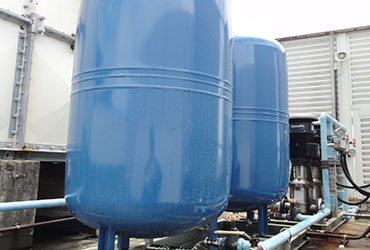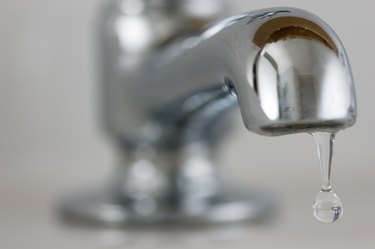Helpful Solutions for Tackling Low Water Pressure in Your Home
Helpful Solutions for Tackling Low Water Pressure in Your Home
Blog Article
On this page further down you can get more sensible insights relating to Low Water Pressure in the House?.

Low tide stress in your home can be a discouraging issue, affecting whatever from showering to washing recipes. If you're experiencing weak water circulation, there are several feasible reasons and remedies to explore. In this overview, we'll talk about usual factors for low tide pressure and functional actions to attend to the issue properly.
Intro to Low Water Pressure
Low tide stress takes place when the circulation of water from your taps, showers, and various other fixtures is weak than normal. This can make daily jobs much more challenging and less effective. Understanding the causes of low water pressure is essential to locating the right solution.
Common Root Causes Of Low Water Pressure
Faulty Stress Regulators
Pressure regulatory authorities are responsible for maintaining consistent water pressure in your house. If they malfunction, it can lead to low water pressure or uneven circulation throughout your house.
Municipal Water System Issues
Sometimes, the issue lies outside your home. Local water supply concerns, such as main line leakages or upkeep work, can momentarily decrease water stress in your location.
Pipeline Obstructions
In time, pipes can end up being obstructed with natural resource, debris, or debris, restricting the circulation of water. This is a common issue in older homes with galvanized steel pipes.
Rust
Deterioration within pipes can bring about leakages and lowered water stress. Corrosion accumulation can constrict water flow, particularly in aging plumbing systems.
Just How to Identify Low Tide Pressure
Evaluating Pipelines
Inspect noticeable pipelines for signs of leakages, deterioration, or clogs. Take notice of any kind of unusual sounds, such as banging or rattling pipelines, which might suggest concerns within the plumbing system.
Consulting with a Plumber
If you're not able to pinpoint the reason for low water stress, take into consideration working with a specialist plumber to conduct a thorough assessment. They can identify underlying problems and suggest appropriate remedies.
Checking Taps and Components
Beginning by examining the water stress at different taps and fixtures throughout your home. If the issue is separated to particular locations, it might indicate localized troubles.
Do It Yourself Solutions to Fix Low Tide Stress
Flushing Hot Water Heater
Debris build-up in the hot water heater can limit circulation and reduce efficiency. Purging the storage tank regularly helps get rid of sediment and preserve ideal efficiency.
Inspecting Stress Regulatory Authority
Guarantee that the pressure regulator is operating correctly. Readjusting or replacing the regulatory authority can assist restore proper water pressure throughout your home.
Cleaning Aerators and Showerheads
Natural resources can accumulate in aerators and showerheads, decreasing water flow. Eliminate and clean up these parts regularly to boost water stress.
Clearing Clogs in Pipeline
For minor obstructions, try utilizing a plumbing snake or chemical drainpipe cleaner to clear obstructions in pipelines. Be cautious when making use of chemicals and comply with safety guidelines.
When to Call an Expert Plumber
If do it yourself efforts fall short to fix the problem or if you suspect significant plumbing troubles, it's finest to seek support from a qualified plumber. They have the expertise and tools to attend to complicated problems safely and properly.
Safety Nets to Preserve Water Pressure
Installing a Pressure Booster
Consider installing a pressure booster pump to boost water stress in locations with constantly reduced circulation. This can be especially valuable for multi-story homes or residential or commercial properties with high-demand fixtures.
Tracking Water Use
Be mindful of water use practices and avoid overtaxing the plumbing system. Straightforward changes, such as shocking showers and laundry loads, can assist maintain sufficient water stress.
Regular Maintenance
Set up routine upkeep for your plumbing system to stop issues such as corrosion, leakages, and obstructions. Dealing with minor issues early can aid stay clear of even more significant fixings in the future.
Conclusion
Managing low water pressure can be discouraging, however determining the underlying causes and carrying out proper solutions can restore optimal flow throughout your home. Whether it's cleaning up aerators, inspecting pipelines, or seeking advice from a plumber, taking aggressive steps can make sure a steady supply of water for your day-to-day demands.
HOW TO FIX LOW WATER PRESSURE IN YOUR HOUSE
When your plumbing system functions properly, you likely never think about the water pressure coming from your faucets, shower heads, or other water fixtures. If you experience low water pressure in your house, though, it can quickly cause problems for cooking, cleaning, bathing, and laundry. Learning how to fix low water pressure in your house can help you avoid frustrating situations and worsening plumbing issues.
When investigating why your home has low water pressure, call the plumbing professionals at Hutchinson to inspect your system, identify the problem, and perform necessary repairs. Our highly-trained plumbing system experts utilize the best tools and techniques available to resolve issues with your home’s plumbing system. Call today to schedule a service with our experts and resolve the low water pressure in your home.
Common Causes of Low Water Pressure
While learning about how to fix low water pressure in your house, it’s essential to understand the various causes of this issue. From plumbing system failures to issues with your water fixtures, there are many reasons for low water pressure in a home. The most common causes of low water pressure include:
Pipe corrosion: If you live in an old house, your pipes could be much older than you realize. Over time, most pipes corrode, especially those made from galvanized steel. Corrosion creates small holes in your pipes that allow water to leak as it travels to your fixtures, leading to low water pressure. Hard water: Hard water forms when water retains a certain concentration of mineral and sediment buildup. Hard water can exacerbate corrosion and reduce water pressure. Hard water remains one of the main culprits of clogged pipes. Clogged pipes: When a pipe blockage clogs your system, it restricts water flow. That’s why clogged pipes are a leading cause of low water pressure. Faulty fixtures: Components within individual water fixtures can experience isolated clogging and rusting that cause low water pressure. If you notice only low shower pressure or limited faucet flow, inspect your system for faulty fixtures displaying rusting, clogging, and other damage. Water line leaks: Your water supply usually comes from a community source connected to your home through a water line. Any leaking in this water line will reduce water pressure before it enters your home. If you share a water line with neighbors, they might also notice low water pressure due to this problem. Broken pressure regulator: The pressure regulator ensures the water flowing throughout your home remains at a psi of about 50. Damage or breakdown of this crucial component will reduce water pressure throughout your property. Closed valve: The water valve supplying your home must be fully open to enable proper water pressure. A partially closed valve will yield low water pressure and cause issues. 5 Ways to Fix Low Water Pressure
Check for Leaks
Depending on their severity, leaks are usually easy to identify as the cause of your low water pressure. Whether your basement floods overnight or you notice mold growth on surfaces near your pipes, leaks usually present noticeable symptoms. In most cases, you’ll need to call professionals to replace sections of damaged piping or seal water line leaks.
Clear Clogged Pipes and Drains
Clogs can occur in any part of your system at any time. In most cases, it’s difficult to resolve clogged pipes and drains without professional equipment and experience.
Hutchinson experts can perform a comprehensive plumbing system inspection to identify the clog’s source and remove obstructions from your pipes. With the help of advanced equipment, we can restore your home’s normal water flow and pressure.
Replace the Pressure Regulator
After identifying a faulty pressure regulator as the cause of your low water pressure, there’s nothing to do but replace the mechanism. Homeowners should never conduct their own replacement.
Attempting to replace a crucial component like your pressure regulator that attaches to your overall plumbing framework could cause unnecessary damage and worsen the situation. Instead, rely on professionals to replace your pressure regulator properly.
Repair or Replace Broken Faucets and Fixtures
If you notice water pressure issues in an individual faucet or fixture, you can solve the problem quickly. Depending on the type and location of the fixture, you can likely replace it yourself.
For homes with custom fixtures, you might need to special order new parts. In these cases, opting for professional replacements helps you avoid any mishaps that could leave your water feature dysfunctional for longer.
Install a Pressure Booster
Water pressure problems impacting your neighborhood or community at large might require more overarching solutions. If your neighbors experience low water pressure as well, you might need to integrate a pressure booster into your water supply line.
Pressure boosters upgrade the water pressure starting at the source. These mechanisms can provide water pressure benefits to any homes on the same supply line. Call Hutchinson today to install a pressure booster on your water supply line.
Call Hutchinson to Fix All Your Plumbing Issues
Low water pressure is just one of many plumbing problems that reduce home comfort and cause system issues. The top-rated professionals at Hutchinson offer comprehensive plumbing services, including system inspections, maintenance, and repairs.
https://www.hutchbiz.com/blog/2024/01/15/how-to-fix-low-water-pressure-in-house/

I came across that piece of writing on when doing a search on the search engines. Please take a moment to distribute this content if you appreciated it. Many thanks for your time. Revisit us soon.
Call Report this page